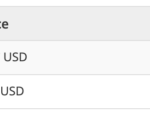The Gurugram-based bootstrapped start-up Agaamin Technologies is going live this Friday-Saturday midnight with the country’s maiden internet offering with the vernacular smart name, which can be used in lieu of the dotcom (.com) or dotin (.in), with the Devanagri equivalent of dotbha (.bha) the first alphabet of the word Bharat.
Agaamin means ‘future’ in Sanskrit, and the founder Sajan Nair said the Indian internet that he is launching can go a long way in “bridging the digital divide between India and Bharat”.
Nair added that the Indian internet with ‘.bha’ as a smart name is not only the first in the country but also across Asia and probably the second/third globally when it comes to “the smart name registry for the world of dWeb or decentralised Web”.
Agaamin also plans to have emojis and surnames as top-level domains (TLDs) shortly.
The first ‘smart TLD’ to be launched is in Devanagri (Hindi) and it will be a single letter TLD that will be the first alphabet of the word Bharat. Agaamin will also in phases roll out the same alphabet in Tamil, Telugu, Kannada Manipuri, and all other languages, Nair told PTI on Friday from Gurugram.
While the maiden offering is in Hindi, plans are afoot to launch the Bengali version (the .bha equivalent in Bengali) by February and Malayalam version by April, and of Urdu by May, Nair said.
Some of the immediate ways in which one can use a smart name are the unique names in the metaverse or the unique wallet address just like a phone number is for UPI; or the domain name for the website that can be the universal log into all the apps, among others.
Stated differently, it means that such smart names allow every individual to build anything she/he wishes on the internet.
Apart from the registration of smart names, he is also planning to create a secondary market where users can buy and sell their smart names thus creating value for the holders of the smart names.
The only remotely similar offerings in the country in dWeb is the few vernacular TLDs that the government offers but they aren’t smart names as they cannot be used for anything except website naming and no application on the Web3/dWeb, he said.
He added that “you could say we are incremental in the way an aeroplane is incremental over a bicycle”.
Agaamin’s TLDs are rooted in a decentralised protocol called ‘Handshake’ instead of the legacy Internet which is managed by a centralised organisation called the US-based ICANN. An open-source protocol like Handshake ensures that the net remains free and open.
Users can easily access dWeb sites via the Beacon Browser for IOS and the Puma Browser for Android. On the desktop/laptop, one can install a free opensource resolver called Fingertip so as to access all of dWeb and the legacy internet securely, said Nair, who has spent over two decades in advertising and marketing.
The three-decades-old internet as we know it today is commonly referred to as Web2.0 and it is about to be disrupted by the ‘New Internet’ also known as the dWeb or decentralised Web or Web3.0.
The dWeb is not just a better version of the current internet but is designed from the ground up in such a way that it is fundamentally and structurally different from how the legacy Internet functions.
One of the fundamental building blocks of the internet is its “namespace” that is now built on TLDs such as .com, .org, .in etc. The names created on these TLDs are used as names for websites. For instance, in google.com, ‘google’ is the name and ‘.com’ is the TLD.
In Web2.0, one’s digital ID is given by centralised entities like Google and Facebook as user name that is then also used to log into other apps. However, on the other hand, “in the dWeb, your user ID belongs to you and you controlled it, which means that unlike the current namespace that is relevant only to website owners in the dWeb, namespace is relevant to everyone”, Nair said.
On the future of smart namespace, Nair said he will have “something for everyone; apart from vernaculars, we’ll soon also have emoji combos as TLDs, such as the tricolor, music, doctor, or engineer emojis”.
(Only the headline and picture of this report may have been reworked by the Business Standard staff; the rest of the content is auto-generated from a syndicated feed.)





